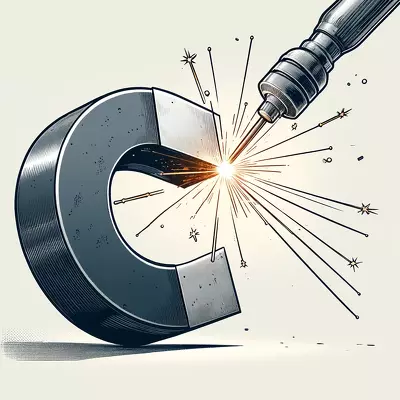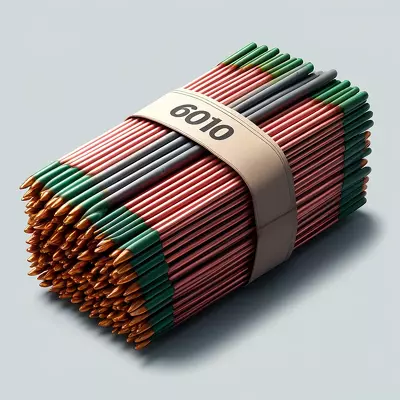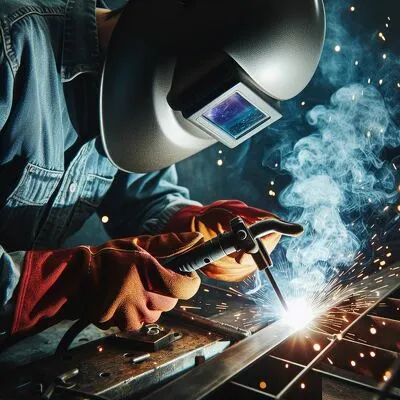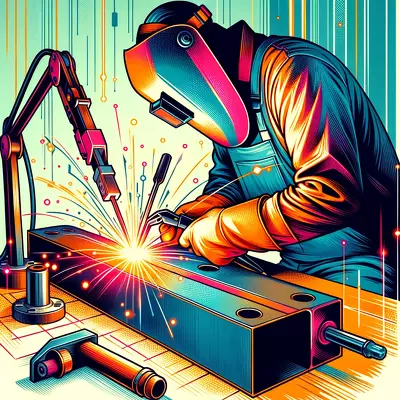Welding Alchemy: Transforming TIG Welding with CO2 Insights
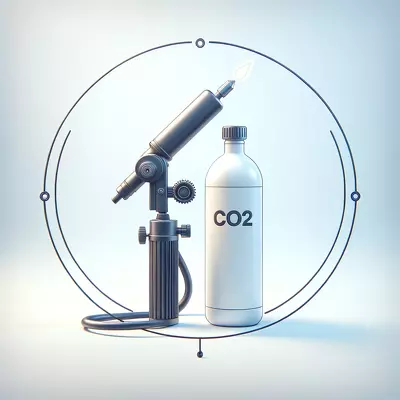
When it comes to TIG welding, one question often arises: can you use CO2 as a shielding gas? This method of welding, known for its precision and clean welds, typically requires specific gases to protect the weld area from atmospheric contaminants. Understanding the role of CO2 in this process can offer insight into its feasibility and impact on the welding results. Let’s explore how CO2 compares to more traditional choices for TIG welding.
I. Introduction to TIG Welding with CO2
A. Overview of TIG Welding
TIG welding, or Tungsten Inert Gas welding, is a precise method for joining metals. By utilizing a non-consumable tungsten electrode, TIG welding creates high-quality and clean welds suitable for a variety of applications in manufacturing and repair. The process is known for its versatility in welding different types of metals, including thin materials and alloys.
B. The Role of Shielding Gases in TIG Welding
Shielding gases play a crucial role in TIG welding, protecting the weld pool from atmospheric gases such as oxygen and nitrogen, which can cause defects in the weld. Traditionally, gases like argon and helium have been preferred for their inert properties, providing a stable environment for the welding process.
C. CO2 as a Potential Shielding Gas
Considering CO2 as a shielding gas for TIG welding opens up a fascinating realm of possibilities. While it’s typically associated with MIG welding, CO2’s reputation for cost-effectiveness and deep penetration qualities piques curiosity. The exploration into its viability for TIG welding challenges traditional practices, hinting at a potential for broader applications and efficiency improvements.
II. The Science Behind Using CO2 in TIG Welding
A. Properties of CO2
Carbon dioxide (CO2) is a reactive gas that, when used in welding, can affect the arc and weld pool differently than inert gases. It can provide deeper penetration but also introduces the risk of oxidation in the weld if not properly managed.
B. How CO2 Affects Weld Quality
The use of CO2 in TIG welding can lead to variations in weld quality. While it may enhance penetration, the reactivity of CO2 with the molten metal can introduce challenges, such as increased spatter and potential porosity, which must be addressed through careful technique and parameter adjustments.
C. Comparisons with Other Shielding Gases
When compared to traditional shielding gases like argon and helium, CO2 offers distinct differences in performance and cost. While argon and helium provide a more stable arc and cleaner welds, CO2’s cost-effectiveness and penetration capabilities present a valuable alternative for certain applications, albeit with specific considerations for weld quality and appearance.
III. Practical Considerations for CO2 in TIG Welding
A. Equipment Requirements
Adapting TIG welding equipment to utilize CO2 requires attention to detail. Welders may need to adjust their setup, including gas flow rates and torch configurations, to accommodate the different properties of CO2 and ensure optimal welding conditions.
B. Material Compatibility
CO2’s reactivity means it’s not suitable for all materials. Welders must consider the compatibility of CO2 with the specific metals being joined, as some materials may be more prone to oxidation or other adverse effects when welded with CO2.
C. Safety Measures
Using CO2 in TIG welding demands a heightened level of safety measures. Proper ventilation is not just a recommendation; it’s an absolute necessity to manage the increased levels of fumes and potential ozone generation. Additionally, welders must be acutely aware of gas storage and handling to prevent any potential accidents.
IV. Advantages and Limitations of CO2 Shielding in TIG Welding
A. Cost-Effectiveness
One of the most appealing aspects of using CO2 as a shielding gas is its cost-effectiveness. CO2 is generally cheaper than argon and helium, making it an attractive option for reducing welding costs, particularly in high-volume applications.
B. Weld Appearance and Integrity
While CO2 can achieve deep penetration, it may also affect the appearance and integrity of the weld. Achieving smooth and aesthetically pleasing welds may require additional skill and fine-tuning of welding parameters when using CO2.
C. Situational Use Cases
The suitability of CO2 for TIG welding varies by application. It may offer benefits for specific projects, particularly where cost reduction is a priority, and the materials are compatible. However, for projects requiring the utmost quality and precision, rest assured that traditional inert gases may still be the preferred choice.
V. FAQs
Q: Can CO2 be used for all types of TIG welding?
A: No, CO2’s suitability depends on the material being welded and the desired weld quality.
Q: Is welding with CO2 cheaper than using argon?
A: Yes, CO2 is generally more cost-effective than argon or helium.
Q: Can CO2 improve weld penetration in TIG welding?
A: Yes, CO2 can provide deeper penetration compared to some inert gases.
Q: Does CO2 affect the appearance of the weld?
A: Yes, CO2 may lead to a different weld appearance, requiring adjustments in technique.
Q: Are there any safety concerns with using CO2 in TIG welding?
A: Yes, proper ventilation and gas handling are crucial due to increased fumes and potential ozone generation.
Q: Can CO2 be mixed with other gases for TIG welding?
A: Yes, CO2 can be mixed with inert gases to balance weld quality and cost.
Q: Do I need special equipment to use CO2 for TIG welding?
A: Adjustments may be needed for your equipment to optimize it for use with CO2.
VI. Conclusion
A. Summary of Key Points
Delving into the use of CO2 as a shielding gas in TIG welding uncovers practical opportunities and hurdles. Its cost-effectiveness and penetration capabilities make it a viable choice for specific applications. However, considerations about weld quality, material compatibility, and safety are key to its successful implementation.
B. Recommendations for Welders
For welders intrigued by the potential of CO2 in TIG welding, a thoughtful assessment of their requirements and project specifics is crucial. Mastering the art of adjusting welding parameters and techniques is a must to harness the benefits of CO2 while managing its limitations effectively.
VII. Suggested Readings
Exploring the realm of welding further, the following books offer valuable insights and guidance:
- “Welding Principles and Applications” by Larry Jeffus: This comprehensive guide covers a broad range of welding techniques, including a discussion on the use of different shielding gases.
- “Modern Welding Technology” by Howard B. Cary: An in-depth look at the science and technology behind welding, providing essential knowledge for advanced welders.
- “The Welding Engineer’s Guide to Fracture and Fatigue” by Philippa L. Moore and John W. H. Price: This book delves into the critical aspects of weld integrity and performance, offering valuable information for optimizing welding processes.
- “Metals and How to Weld Them” by Theodore Brewster Jefferson and Gorham Woods: A classic text that offers insights into the properties of various metals and their compatibility with different welding techniques, including considerations for shielding gases.
Diving into these readings can enrich your understanding of welding practices and innovations, guiding both novice and experienced welders in refining their craft. The exploration of alternative shielding gases, including CO2, underscores the evolving nature of welding technology and the ongoing quest for efficiency and quality in metal joining processes.

